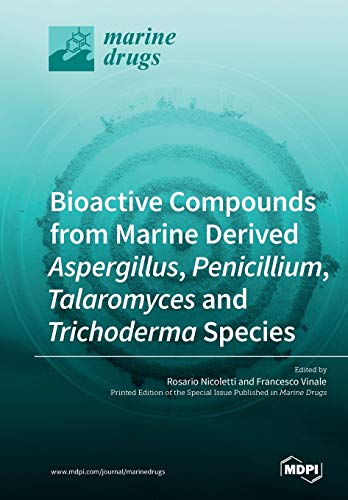

Most ebook files are in PDF format, so you can easily read them using various software such as Foxit Reader or directly on the Google Chrome browser.
Some ebook files are released by publishers in other formats such as .awz, .mobi, .epub, .fb2, etc. You may need to install specific software to read these formats on mobile/PC, such as Calibre.
Please read the tutorial at this link. https://ebooknice.com/page/post?id=faq
We offer FREE conversion to the popular formats you request; however, this may take some time. Therefore, right after payment, please email us, and we will try to provide the service as quickly as possible.
For some exceptional file formats or broken links (if any), please refrain from opening any disputes. Instead, email us first, and we will try to assist within a maximum of 6 hours.
EbookNice Team

Status:
Available4.4
39 reviewsDear Colleagues,
The importance of bioactive natural compounds in pharmacology and other biotechnological fields has stimulated the scientific community to explore new environmental contexts and their associated microbial diversity. As the largest frontier in biological discovery, the sea represents a significant source of organisms producing novel secondary metabolites with interesting bioactivities. Of the available biological material, fungi have received increasing consideration, both due to their pervasive occurrence in varying habitats as well as their aptitude to develop symbiotic associations with higher organisms in numerous contexts. In many cases, fungal strains have been reported as the real producers of drugs originally extracted from marine plants and animals. Due to the constantly increasing number of marine-derived fungi yielding valuable bioactive products, it is now appropriate to present these findings to a recipient audience in a more organized form.
This Special Issue of Marine Drugs, entitled “Bioactive Compounds from Marine-Derived Aspergillus, Penicillium, Talaromyces, and Trichoderma Species”, is specifically focused on a few genera of ascomycetous fungi which are widespread regarding marine contexts and are particularly inclined to establishing symbiotic relationships. For this project, we welcome submissions of full research papers, short notes, and review articles reporting the discovery and characterization of products showing antibiotic, antitumor, antiviral, insecticidal, antimalarial, antifouling, antioxidant, plant growth-promoting and/or resistance-inducing, as well as other less-exploited activities.
Dr. Rosario Nicoletti
Dr. Francesco Vinale
Guest Editors